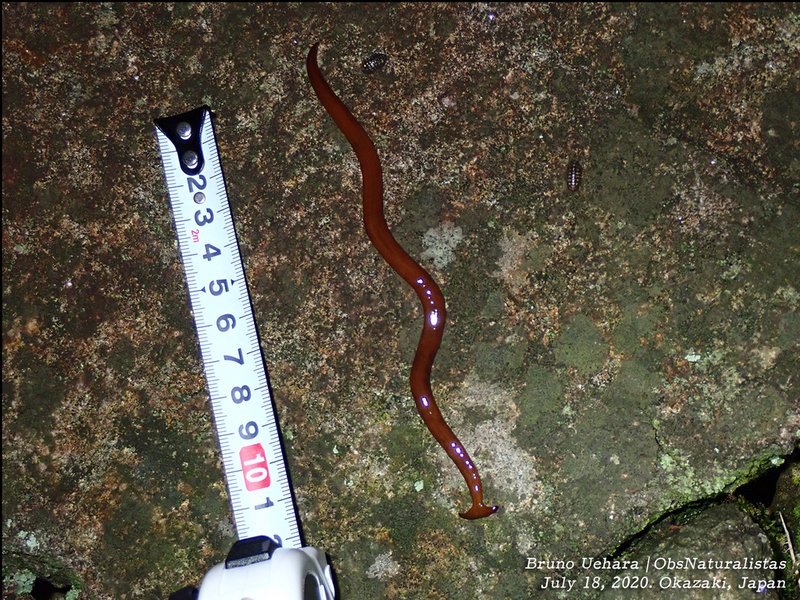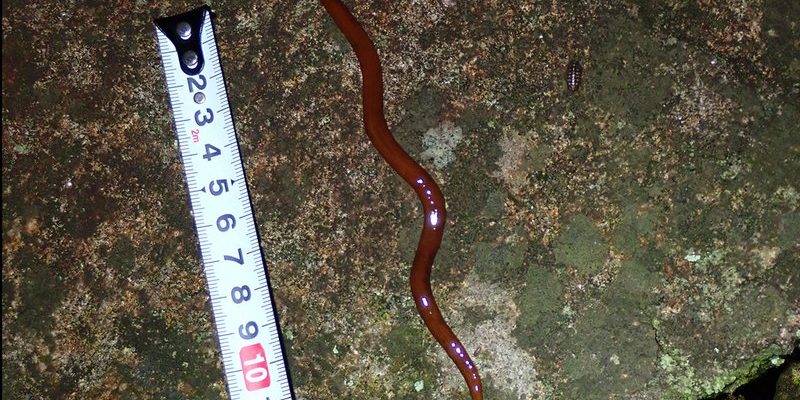
These worms, known scientifically as *Bipalium*, are notable for their flat, elongated bodies and distinct hammer-shaped heads. While they might look like ordinary earthworms at first glance, they’re actually predators, often feeding on other small invertebrates. Their life cycle is influenced by the changing seasons, making them a captivating subject for both scientists and nature enthusiasts alike. If you’re curious about how hammerhead worms thrive throughout the year, stick around!
What Are Hammerhead Worms?
Hammerhead worms are part of the **Geoplanidae** family, which is characterized by their distinctive flattened bodies and unique hammer-shaped heads. Unlike earthworms, which play a crucial role in soil health, hammerhead worms are predators. They primarily feast on other soil-dwelling creatures, such as earthworms, slugs, and even insects. This predatory behavior makes them quite different from other worms you might find in your garden.
These worms can grow quite large, reaching lengths of up to 12 inches, and they come in a variety of colors, including brown, gray, and even striped patterns. Their appearance can sometimes be mistaken for that of other flatworms, but it’s their head shape that truly sets them apart. Picture them like tiny, flat superheroes with a unique mission in the garden: keeping pest populations in check.
The Life Cycle of Hammerhead Worms
Hammerhead worms exhibit a fascinating life cycle that can be categorized into several stages: **egg, juvenile, and adult**. Understanding each stage is key to appreciating how these creatures adapt to their environment.
At the beginning of their life, hammerhead worms start as eggs. These eggs are typically laid in the soil during warm, moist conditions, often in spring or early summer when temperatures are rising. You might find them nestled in damp areas, ready to hatch once the conditions are right. This stage is crucial, as it sets the foundation for future generations.
After hatching, the juvenile stage begins. Young hammerhead worms are often smaller and less distinct in shape compared to their adult counterparts. During this growth phase, they focus on feeding and developing, which is usually most active during warmer months. As they eat and grow, they’ll shed their skin several times, preparing for their transition into adulthood.
Seasonal Variations: Spring and Summer
Spring is when hammerhead worms start to emerge from their underground havens. As the soil warms up, these worms become more active, seeking out food sources. They thrive in moist environments, so rainy days are particularly beneficial for their hunting expeditions. During this time, they can be seen gliding over the soil, searching for their next meal.
As the weather continues to warm in summer, hammerhead worms reach their peak activity. They complete their growth cycle and become adults. The longer days and consistent warmth enable them to pursue a more aggressive hunting strategy. They’re not just surviving—they’re thriving and reproducing. This is when you’ll notice their unique hammer-shaped heads most clearly as they glide through gardens, contributing to pest control in those sunny months.
Seasonal Variations: Fall and Winter
As fall rolls in, hammerhead worms prepare for a significant change. The decrease in temperatures means they’ll need to adapt. They begin to slow down and may even go dormant as conditions become less hospitable for hunting. You might not spot them as easily, but they remain present in the soil, waiting for more favorable weather.
Winter is a quiet time for hammerhead worms. They tend to burrow deeper into the soil to escape the cold. It’s almost like they’re hibernating—out of sight but very much alive. During this period, their metabolism slows significantly, allowing them to survive on stored energy until the soil warms up again in spring.
Ecological Role of Hammerhead Worms
You might be wondering why it matters to learn about these peculiar worms. Hammerhead worms play an essential role in the ecosystem, particularly in controlling pest populations. By preying on other small invertebrates, they help maintain a balanced environment. This can be particularly beneficial in gardens, where they naturally manage the populations of pests that might otherwise wreak havoc on your plants.
However, it’s important to note that they can also be a double-edged sword. In some areas, they can become invasive, outcompeting native worm species. This affects soil health and can lead to a decline in biodiversity. Understanding their life cycle and seasonal patterns can help us appreciate their role in our ecosystems, both positive and negative.
How to Manage Hammerhead Worms in Your Garden
If you’ve spotted hammerhead worms in your garden and are concerned about their impact, don’t worry—there are some steps you can take. First, it helps to understand their habits. They thrive in moist, rich soil, so maintaining good drainage can deter them.
Additionally, consider using natural barriers, like beneficial nematodes, to help control their population. These tiny organisms can target the pests that hammerhead worms feed on, creating a more balanced ecosystem. You might also think about monitoring their presence over time, so you can identify any population spikes and respond accordingly.
The Fascinating Future of Hammerhead Worm Research
The study of hammerhead worms is still developing, and researchers are continually discovering more about these intriguing creatures. Understanding their life cycles, behavior, and role in the ecosystem opens the door to various avenues of research. There’s ongoing work to explore how these worms interact with other species and how they can be managed in both natural and urban environments.
With climate change altering ecosystems, observing how hammerhead worms adapt to changing conditions will be crucial. Scientists are particularly interested in how their populations shift with different weather patterns, which could provide insight into broader ecological trends.
In conclusion, the seasonal life cycle patterns of hammerhead worms offer a clear view into their ecological importance and adaptability. These unique creatures remind us of the delicate balance of our ecosystems and the intricate connections between species. By understanding them better, we can appreciate their roles in nature—both as predators and as members of a larger community. So next time you’re in your garden, take a moment to observe the fascinating world of hammerhead worms. You might just see them in a whole new light!

